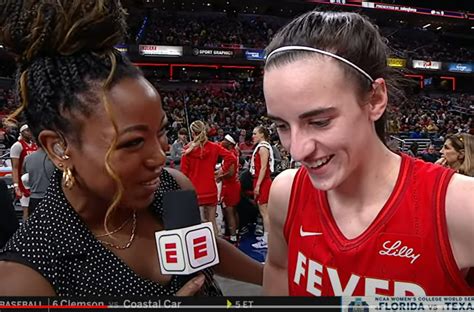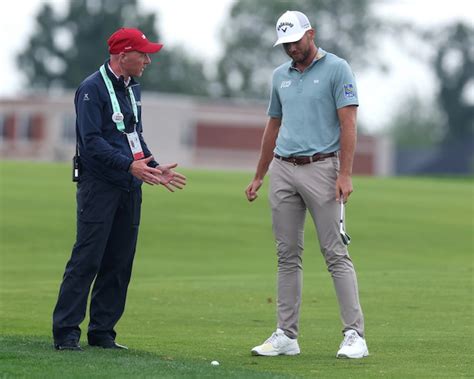
Caitlin Clark addressed the controversial hard foul committed by Chicago Sky guard Chennedy Carter, emphasizing the need to protect women’s basketball amidst escalating physicality and attention surrounding the WNBA.
Caitlin Clark, the Indiana Fever rookie sensation, has responded to the contentious foul delivered by Chicago Sky’s Chennedy Carter during Saturday’s game, advocating for the protection and promotion of women’s basketball while downplaying any personal animosity. The incident, which saw Carter hip-check Clark to the ground during the Fever’s 71-70 loss, sparked widespread debate about the increasing physicality in the WNBA and the disproportionate attention Clark receives.
Speaking to reporters after the game and in subsequent media appearances, Clark addressed the foul, stating that while physical play is part of basketball, safety and respect should remain paramount. “I think it’s just, you know, get up, move on,” Clark said, according to ESPN. “It is what it is. You know, try to make a play. Like I said, just gotta keep my head.”
Clark’s response largely centered on the bigger picture: ensuring that the growing popularity of the WNBA is nurtured and that player safety is prioritized. She expressed her concern that the narrative surrounding the incident could overshadow the positive developments and excitement within the league.
“I think the biggest thing is, like, let’s just continue to elevate the game. People are talking about the game. People are watching the game. That’s the most important thing,” Clark emphasized. “You can learn and grow from every single game. That’s what I’m going to continue to do. I’m going to keep playing hard and try to help my team win.”
The foul occurred late in the third quarter when Carter delivered a shoulder to Clark as she approached the basket. The referees assessed an offensive foul on Clark, which was later upgraded to a Flagrant 1 foul upon league review. This decision intensified the scrutiny and fueled discussions about whether Clark is being unfairly targeted due to her fame and the attention she brings to the league.
Carter initially declined to comment directly on the foul, posting cryptic messages on social media that further fueled the controversy. However, she later acknowledged the incident, albeit indirectly, stating that she plays with passion and intensity. “I’m a competitor, and I’m going to compete no matter who I’m playing against,” Carter said in a later statement.
The incident has divided opinions among players, analysts, and fans. Some argue that Clark needs to adjust to the physicality of the WNBA, while others believe that she is being unfairly targeted and subjected to unnecessary aggression. Several prominent figures in the basketball community have weighed in, including former players and coaches, who have offered varying perspectives on the situation.
The WNBA itself has been grappling with how to manage the increased attention and scrutiny that comes with Clark’s presence. While her arrival has undoubtedly boosted viewership and revenue, it has also brought challenges related to player dynamics and the league’s overall image. League officials have emphasized the importance of maintaining a balance between promoting individual stars and upholding the integrity of the game.
Clark’s call to “protect women’s sports” reflects a broader concern about the need to ensure a safe and respectful environment for all players, regardless of their popularity or perceived status. She hopes that the focus remains on the positive aspects of the WNBA, such as the high level of competition, the talent of the players, and the growing fan base.
This incident also highlights the racial undertones in the discussions surrounding Clark. As a white player achieving unprecedented fame in a predominantly Black league, the dynamic is fraught with sensitivities. Some commentators have suggested that the criticism of Clark is tinged with racial bias, while others argue that her supporters are downplaying the contributions of Black players who have paved the way for her success.
Clark herself has addressed the issue of race, emphasizing the importance of celebrating the diversity of the WNBA and acknowledging the contributions of all players. She has expressed her admiration for the Black players who have inspired her and paved the way for her success.
“I think it’s really important to lift up all women in this league, whether it’s Black or white, it doesn’t really matter,” Clark said in a recent interview. “We all bring different things to the table, and we should be celebrating that.”
Looking ahead, the WNBA faces the challenge of navigating the complexities of increased attention and heightened competition. League officials, players, and fans must work together to ensure that the focus remains on the positive aspects of the game and that player safety and respect are prioritized. Clark’s message of protecting women’s sports serves as a reminder of the importance of fostering a supportive and inclusive environment for all.
The Indiana Fever and Chicago Sky are scheduled to face off again multiple times this season, and these games are expected to draw considerable attention. The league and teams will likely be taking extra precautions to ensure that the games are played safely and fairly.
In summary, Caitlin Clark’s response to the foul by Chennedy Carter has underscored the need to protect and promote women’s basketball. Her emphasis on player safety, respect, and the importance of celebrating the league’s diversity reflects a broader concern about the challenges and opportunities that come with increased attention and competition. As the WNBA continues to evolve, it is crucial that all stakeholders work together to ensure a positive and sustainable future for the sport.
Expanded Analysis and Background Information:
The WNBA has experienced a surge in popularity, largely attributed to the arrival of Caitlin Clark. Her college career at the University of Iowa captivated audiences, breaking viewership records and generating unprecedented excitement around women’s basketball. This momentum has carried over into the WNBA, with games featuring Clark and the Indiana Fever drawing large crowds and significant television ratings.
However, this increased attention has also brought challenges. The existing WNBA players, many of whom have toiled in relative obscurity for years, are now faced with the prospect of sharing the spotlight with a rookie who has quickly become the face of the league. This has created tension and raised questions about fairness, representation, and the distribution of opportunities.
The physical nature of the WNBA is also a contributing factor to the current situation. The league is known for its intense competition and aggressive style of play. Players often engage in physical battles for position and are not afraid to use their bodies to gain an advantage. This physicality can sometimes cross the line, leading to fouls and injuries.
In Clark’s case, some observers believe that she is being targeted by opponents who are trying to send a message. They argue that her opponents are intentionally playing her harder and pushing the boundaries of what is considered acceptable in the game. Others contend that Clark simply needs to adjust to the physicality of the WNBA and learn how to protect herself on the court.
The incident between Clark and Carter is not an isolated one. There have been several other instances this season where Clark has been subjected to hard fouls and questionable calls. These incidents have fueled the debate about whether she is being unfairly treated and whether the league is doing enough to protect its star player.
The WNBA’s response to these incidents has been mixed. League officials have issued fines and suspensions in some cases, but they have also been reluctant to intervene too aggressively, fearing that it could be seen as favoring one player over another. The league is trying to strike a balance between protecting its players and maintaining the integrity of the game.
The racial dynamics of the situation also cannot be ignored. The WNBA is a predominantly Black league, and Clark is a white player who has quickly become the most recognizable face of the league. This has created some racial tensions, with some observers suggesting that the criticism of Clark is tinged with racial bias. Others argue that her supporters are downplaying the contributions of Black players who have paved the way for her success.
It is important to acknowledge the complex and nuanced nature of this issue. There are valid arguments to be made on both sides. It is also important to avoid making generalizations or perpetuating stereotypes. The goal should be to foster a respectful and inclusive environment where all players can thrive.
Caitlin Clark has shown remarkable poise and maturity in the face of adversity. She has consistently emphasized the importance of protecting women’s sports and celebrating the diversity of the WNBA. She has also expressed her admiration for the Black players who have inspired her and paved the way for her success.
Her message of protecting women’s sports is particularly relevant in the current context. Women’s sports have historically been underfunded and undervalued. It is important to ensure that the WNBA continues to grow and flourish and that its players receive the recognition and support they deserve.
The league and its players must work together to address the challenges and opportunities that come with increased attention and competition. This includes fostering a culture of respect, promoting player safety, and celebrating the diversity of the league. By doing so, the WNBA can ensure a positive and sustainable future for the sport.
Frequently Asked Questions (FAQ):
1. What exactly happened between Caitlin Clark and Chennedy Carter?
During a game between the Indiana Fever and Chicago Sky, Chennedy Carter delivered a hard foul to Caitlin Clark. Carter hip-checked Clark to the ground as Clark was approaching the basket late in the third quarter. Referees initially assessed an offensive foul on Clark, but it was later upgraded to a Flagrant 1 foul on Carter after league review. This incident sparked widespread controversy and debate.
2. What was Caitlin Clark’s response to the foul?
Caitlin Clark downplayed the personal aspect of the foul and focused on the need to protect and elevate women’s basketball. She emphasized the importance of player safety and expressed concern that the narrative surrounding the incident could overshadow the positive developments and excitement within the WNBA. She stated, “I think the biggest thing is, like, let’s just continue to elevate the game. People are talking about the game. People are watching the game. That’s the most important thing.”
3. What was Chennedy Carter’s reaction to the incident?
Initially, Chennedy Carter did not directly comment on the foul, posting cryptic messages on social media instead. She later acknowledged the incident indirectly, stating that she plays with passion and intensity, remarking, “I’m a competitor, and I’m going to compete no matter who I’m playing against.”
4. How has the WNBA responded to the increased attention and physicality surrounding Caitlin Clark?
The WNBA is navigating the complexities of increased attention and heightened competition. League officials are attempting to strike a balance between promoting individual stars like Clark and upholding the integrity of the game. They have issued fines and suspensions in some cases but are wary of intervening too aggressively, which could be perceived as favoritism. The league emphasizes maintaining player safety and fostering a respectful environment.
5. What are the racial dynamics at play in this situation?
The WNBA is a predominantly Black league, and Clark is a white player who has quickly become the most recognizable face of the league. This dynamic has led to discussions about racial bias and representation. Some commentators argue that criticism of Clark is racially motivated, while others believe her supporters downplay the contributions of Black players. Clark has addressed this issue, emphasizing the importance of celebrating the diversity of the WNBA and acknowledging the contributions of all players.
Further Context and Details:
The Caitlin Clark-Chennedy Carter incident is emblematic of larger trends and tensions within the WNBA as it navigates unprecedented growth and attention. Clark’s arrival has been a boon for the league, bringing in new fans, increased viewership, and greater media coverage. However, it has also amplified existing fault lines and created new challenges related to player dynamics, racial representation, and the evolving nature of competition.
Clark’s impact on the WNBA is undeniable. Her college career at Iowa shattered records, drawing massive television audiences and generating a level of excitement rarely seen in women’s basketball. This popularity has translated to the WNBA, where her games are consistently selling out and drawing significant ratings. This increased attention has also benefited the league as a whole, raising its profile and attracting new sponsors.
However, this rapid rise to prominence has not been without its challenges. Many WNBA players have spent years, even decades, toiling in relative obscurity, working to build the league and its fanbase. The sudden influx of attention on Clark has created a sense of unease and resentment among some players, who feel that she is receiving disproportionate recognition for her accomplishments.
The physicality of the WNBA is another key factor in this situation. The league is known for its aggressive and competitive style of play, with players often engaging in intense physical battles for position. This physicality is part of what makes the WNBA so exciting to watch, but it can also lead to injuries and contentious incidents like the one between Clark and Carter.
Some observers believe that Clark is being unfairly targeted by opponents who are trying to send a message. They argue that her opponents are intentionally playing her harder and pushing the boundaries of what is considered acceptable in the game. Others contend that Clark simply needs to adjust to the physicality of the WNBA and learn how to protect herself on the court.
The racial dynamics of the situation also cannot be ignored. The WNBA is a predominantly Black league, and Clark is a white player who has quickly become the most recognizable face of the league. This has created some racial tensions, with some observers suggesting that the criticism of Clark is tinged with racial bias. Others argue that her supporters are downplaying the contributions of Black players who have paved the way for her success.
It is important to acknowledge the complex and nuanced nature of this issue. There are valid arguments to be made on both sides. It is also important to avoid making generalizations or perpetuating stereotypes. The goal should be to foster a respectful and inclusive environment where all players can thrive.
The WNBA has a rich history and a diverse group of players who have contributed to its success. Players like Lisa Leslie, Sheryl Swoopes, and Dawn Staley paved the way for future generations of basketball stars. Their achievements and contributions should not be forgotten or overlooked.
Clark herself has acknowledged the importance of these players and has expressed her admiration for their accomplishments. She has also emphasized the need to celebrate the diversity of the WNBA and to recognize the contributions of all players, regardless of their race or background.
The incident between Clark and Carter should be seen as an opportunity for the WNBA to address some of the underlying issues and tensions that exist within the league. The league should work to foster a culture of respect, promote player safety, and celebrate the diversity of its players. By doing so, the WNBA can ensure a positive and sustainable future for the sport.
The WNBA’s leadership has a crucial role to play in navigating these challenges. They need to create an environment where all players feel valued and respected. They also need to ensure that the league’s rules are enforced fairly and consistently.
The league’s players also have a responsibility to act professionally and respectfully on and off the court. They should set a good example for young fans and represent the WNBA in a positive light.
The media also has a role to play in shaping the narrative surrounding the WNBA. They should strive to provide balanced and accurate coverage of the league and its players. They should also avoid sensationalizing conflicts or perpetuating stereotypes.
Ultimately, the success of the WNBA depends on the collective efforts of the league, its players, the media, and the fans. By working together, they can create a thriving and sustainable future for women’s basketball.
Caitlin Clark’s message of protecting women’s sports is a reminder of the importance of fostering a supportive and inclusive environment for all. Her call for respect and safety should be heeded by all stakeholders in the WNBA. As the league continues to grow and evolve, it is crucial that it remains committed to its core values and principles.
The upcoming games between the Indiana Fever and the Chicago Sky will undoubtedly be highly anticipated. These games will provide an opportunity for both teams to demonstrate their skills and competitiveness. They will also serve as a reminder of the importance of respect, sportsmanship, and player safety.
The WNBA has the potential to become one of the most popular and successful sports leagues in the world. By addressing the challenges and opportunities that lie ahead, the league can ensure a bright future for women’s basketball. The league has implemented stricter reviews of flagrant fouls, aiming to deter excessive physicality. Educational programs and mentorship initiatives might further promote understanding and respect among players. Clear and consistent communication of the league’s values, alongside robust enforcement of rules, can support a positive environment. Furthermore, celebrating player achievements and stories, beyond just on-court performance, can foster unity and mutual appreciation within the WNBA community.









